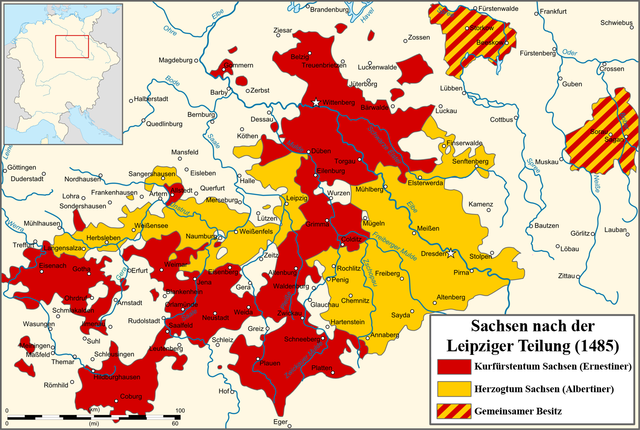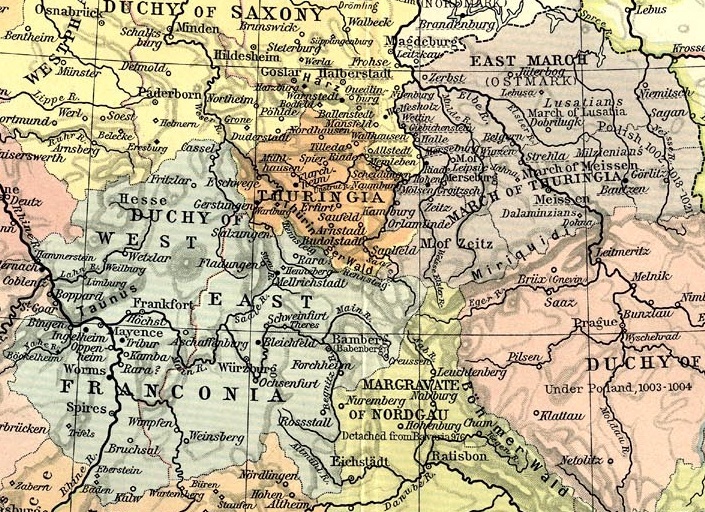The Mark of Meissen was founded in 965 by Emperor Otto I.
The March of Thuringia was a term for the land east of the Saale, inhabited by Polabian Slavs.
The Treaty of Leipzig in 1485 divided Wettin lands between the brothers Ernest and Albert.

Ernest was said to be disappointed by this outcome, as he had hoped to rule the lands around Meissen, which had been ruled by the House of Wettin since the 12th century, rather than the newly acquired lands of southern Thuringia.
Elector Ernest established the town of Wittenberg as the capital of the electorate and proclaimed himself Landgrave of Thuringia. Duke Albert III established Meissen as the centre of the duchy and deemed himself Margrave of Meissen.
In the course of the Protestant Reformation the Ernestine and Albertine branches of the Wettin dynasty found themselves on opposing sides of the 1546/47 Schmalkaldic War. As an ally of victorious Emperor Charles V of Habsburg, the Albertine Duke Maurice of Saxony gained the Wittenberg territory and the electoral dignity, after his defeated Ernestine cousin Elector John Frederick I signed the Capitulation of Wittenberg.
The Albertine line ruled the Electorate and later Kingdom of Saxony from Dresden.
The Ernestine line ruled from Weimar and divided into numerous Ernestine duchies.
